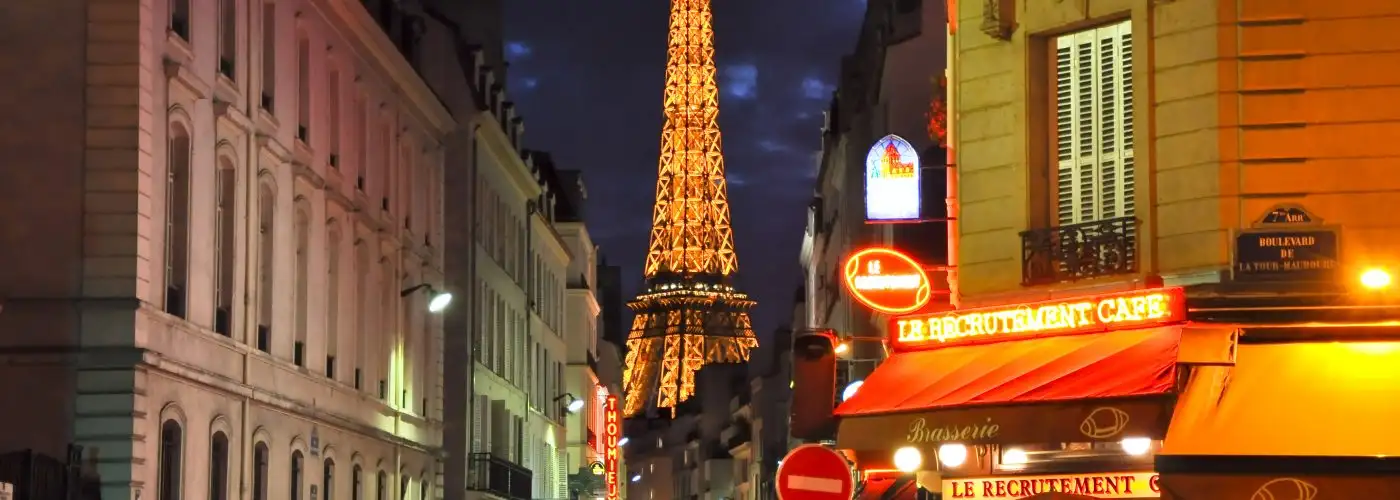Feeling like you’re being judged by locals every time you visit Paris? You’re probably right. But know this: Every time a Parisian shoots you a dirty look for talking too loudly or wearing shorts to dinner, they are doing you—and everyone else who loves Paris—a favor. Of the three most-visited cities on Earth, Paris is by far the smallest in size, making it possibly the most tourist-dense city of them all. With visitors often outnumbering residents, it makes sense that Parisians fiercely defend the etiquette and language that defines the very culture so many travel so far to see. So why not play along?
From your choice of clothes to how to enter a shop, here are 10 tips to help you move through the city with grace and confidence. So next time you’re in Paris, don’t make any of the following mistakes.
To delve into some of the most common mistakes of North American travelers to Paris, I spoke with Penny Bernier, a born-and-raised San Franciscan who has spent nearly four decades living in Paris; Marika Prince, a longtime American expat in Paris; and the gang at Atout France, the France Tourism Development Agency.
Dress Down
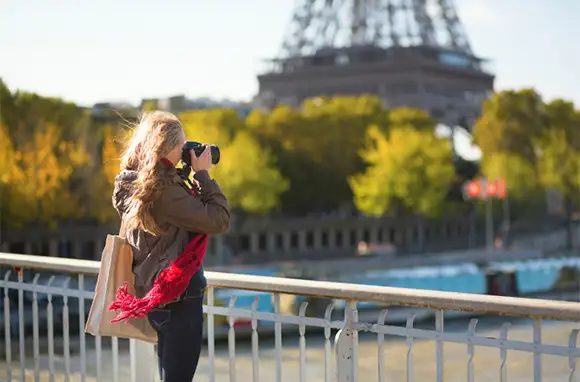
We all like to be comfortable, but Paris has a magic that is simply incompatible with flip-flops, shorts, yoga pants, high-performance sneakers, and university sweatshirts. Some restaurants even have dress codes that forbid sandals and shorts. And just as you wouldn’t bring high heels camping, you probably shouldn’t bring sportswear and leisure apparel to Paris. Instead, embrace casual chic so the city can embrace you.
Ignore Shopkeepers As You Enter and Exit
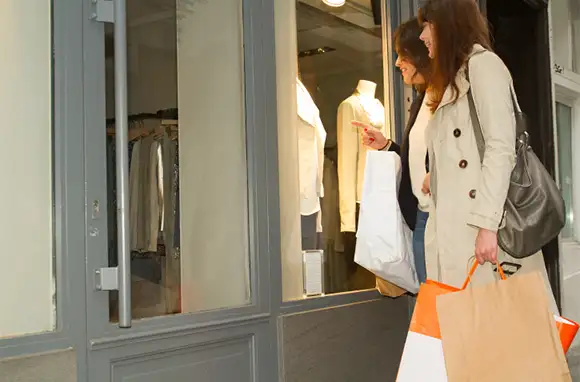
Visitors who want an easy way to practice basic French need look no further than the shop on the corner. In small shops and cafes, it’s de rigueur to meet the shopkeeper’s eyes and say, “Bonjour madame/monsieur,” as you enter and say, “Merci, au revoir,” as you leave. In a city as cosmopolitan as Paris, it’s a pleasingly small-town habit and one that can make you feel a little more at home.
Put Your Hands Under the Table

What do France and the Old West have in common? Both want you to keep your hands where they can see ’em. Unlike the Old West, though, in France, this isn’t an invitation for your elbows—to keep with the local custom, rest your hands or your wrists on the edge of the table. You may even find that once you get used to keeping your hands in plain view, it can feel strange and a bit naughty to hide them from your fellow diners. What are they doing under there, anyway?
Start Conversations in English

Here’s a handy trick I’ve had success with hundreds of times: If you want someone to speak English with you in Paris, start by speaking French to them. Right away, you’ll get credit for not assuming everyone around you speaks English. And, because Parisians are particularly sensitive to the mangling of their mother tongue, chances are extremely high that your accent and grammar will drive whomever you’re speaking with to switch to English. And sure, if you’re actually trying to improve your spoken French, being dragged back into English can be discouraging. But if you’re simply looking for directions you can understand, you’re more than likely to get what you need with this approach.
Put Bread on Your Plate

Take a look at the table at your typical Parisian bistro and you’ll likely notice the bread plate is missing. Surprise! In most restaurants, you’re expected to put your bread on the table (except in the more upscale ones, which include a bread plate in the place setting). For many Americans, this can feel both messy and strangely informal. Even more casual is the custom of eschewing the knife in favor of breaking bread apart with your hands and placing individual pieces in your mouth. Embrace this practice by marveling at how often the Parisian way is an intricate dance between the sophisticated and the rustic.
Touch the Produce

This one is specific to the many outdoor farmers’ markets in Paris, where beautiful ripe fruits and vegetables are piled high, beckoning the senses. While you’re free to feast your eyes and inhale the glorious scents, you should resist the urge to touch anything. When you’re ready to buy, the seller will select for you, which can be difficult if you’re used to feeling each item yourself. But trust the seller; most of the time, they want you to be as happy with your selection as you do.
Ask for a to-Go Bag

In life, there are some things you just have to let go of. And leftovers in Paris are foremost among them. Request a doggie bag at a restaurant and the looks you’ll receive will range from incredulity to incomprehension—or, if you’re especially lucky, thinly veiled disgust. If you really haven’t had enough of a particular dish, just make plans to revisit the restaurant. Besides, with so much good food to try, you’re better off freeing yourself up to experience each meal anew.
Make Rookie Menu Mistakes
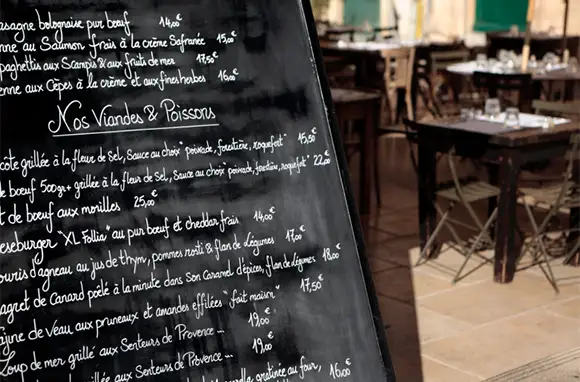
French food is only as great as your ordering skills, so it pays to brush up on your food vocabulary and knowledge of local specialties before you go. Because you don’t want to be the person who requests their steak tartare cooked (the point of the dish is that it is served raw) or orders escalope expecting scallops (though the thinly sliced, sauteed meat you’ll receive will still be lovely, no doubt). And, if you’re trying to blend in, don’t ask for butter with your bread (though there are a few exceptions to this rule that David Lebovitz explains well) or order soda with your meal (better to stick with water or wine).
Wait for the Check
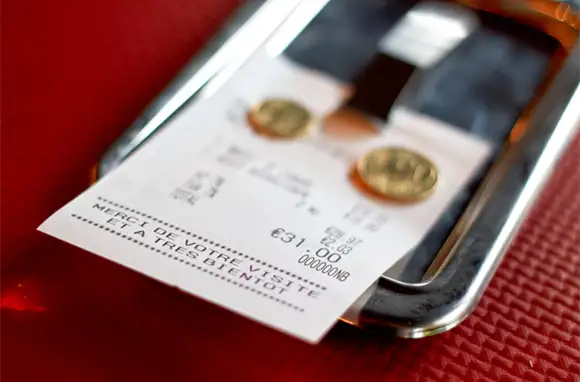
At restaurants in the U.S., servers generally appear, unprompted, at the close of the meal with the check and the phrase, “Whenever you’re ready.” This leaves it up to the whim and discretion of the diners to decide when to wrap up. In Paris (and in France generally), the exact opposite is the norm. You won’t ever see a check until you ask for it, but once you set the wheels in motion, you should be ready to pay and vacate the table without additional lingering.
Hug

Though many Americans think of hugging as less intimate than kissing, when you break it down into its composite parts, a full body press with entwining arms is pretty personal, especially compared to a quick double-cheek peck. As such, hugging is out when you greet Parisians (unless they’ve spent a lot of time in the U.S.). Instead, opt for a handshake if you want to maintain your personal space, or if the situation feels right, greet like a local and faire la bise. These kisses are really more of a quick press of cheeks (one for each cheek) with an accompanying air kiss.
More from SmarterTravel:
- Best Ways to Blend in with Locals
- A Sweet Trip to Paris (in Pictures)
- 8 Travel Myths About Paris, Debunked
[viator_tour destination=”479″]
Editor’s note: This story was originally published in 2014. It has been updated to reflect the most current information.
We hand-pick everything we recommend and select items through testing and reviews. Some products are sent to us free of charge with no incentive to offer a favorable review. We offer our unbiased opinions and do not accept compensation to review products. All items are in stock and prices are accurate at the time of publication. If you buy something through our links, we may earn a commission.
Related
Top Fares From
Today's Top Travel Deals
Brought to you by ShermansTravel
Ireland: 9-Night Dublin, Kilkenny, Killarney, Galway...
Brendan Vacations
 vacation
$3875+
vacation
$3875+
Amsterdam to Copenhagen: Luxe, 18-Night Northern...
Regent Seven Seas Cruises



Ohio: Daily Car Rentals from Cincinnati
85OFF.com


